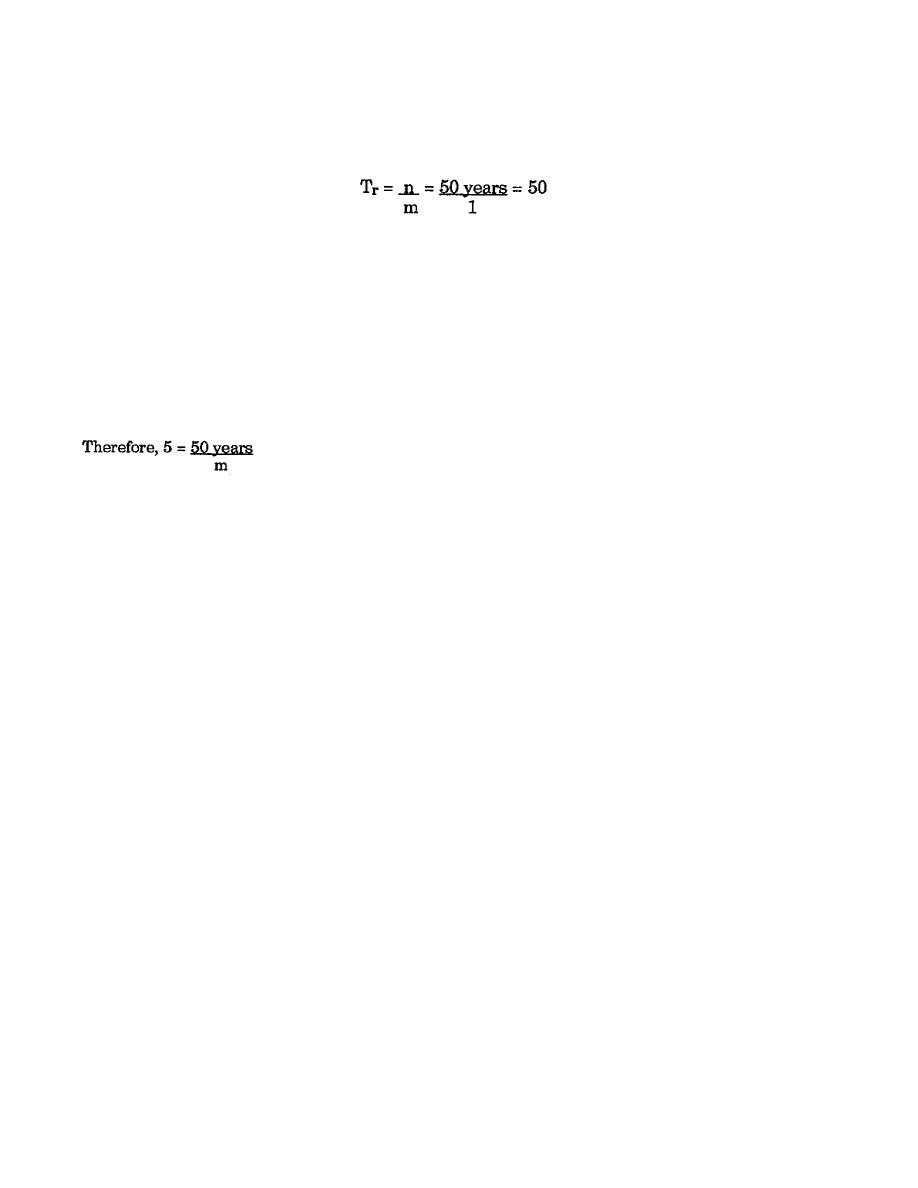
If the records contain data over a long period of time, the formula is T = n/m and the recurrence interval
calculated will be sufficiently accurate for design purposes.
The recurrence interval of the first-ranked storm is--
Where:
Tr = Recurrence interval, or time of return in years
n = Length of record (number of years data)
m = Order number, in descending magnitude (rank of storm)
To find out which storm occurs at the interval of the design storm, say five years--
Tr = 5
Therefore, m = 10 (the tenth worst storm).
When pinpoint data is not available, the engineer should refer to an isohyetal map. We covered the way to read
an isohyetal map on page 1-8. To review the basic rules--
When the drainage area falls on an isohyetal line, read the value of that isohyet.
When the drainage area falls inside an encircling isohyetal line, read the value of that isohyet.
When the drainage area falls between the isohyetal lines, DO NOT INTERPOLATE. Read the value of
the larger isohyet.
To obtain "I" expressed in in/hr, you may have to perform the depth to intensity conversion as explained in
Lesson 1, Part B. Next adjust the duration so that it equals the design TOC. To do this, utilize figure 1-5, page 1-
9, the Standard Intensity/Duration Curves.
EN5465
2-20



 Previous Page
Previous Page
